 |
 |
 |
| |
The incidence of rash observed with the NNRTI etravirine in the Phase III DUET trials using pooled 48-week data
|
| |
| |
Reported by Jules Levin
Anthony Mills,1 Beatrice Grinsztejn,2 Christine Katlama,3 Monika Peeters,4 Katrien Janssen,4 Thomas Kakuda,5 Rekha Sinha,4 Goedele De Smedt4
1Private Practice, Los Angeles, CA, USA; 2Instituto de Pesquisa Clinica Evandro Chagas-Fiocruz, Brazil; 3H™pital Pitie-Salpetriere, Paris, France; 4Tibotec BVBA, Mechelen, Belgium; 5Tibotec Inc., Yardley, PA, USA
AUTHOR CONCLUSIONS
Rash occurred more frequently in the ETR + BR group than in the placebo + BR group
- 19% vs 11% (p<0.0001), respectively
- higher incidence of rash in women than in men in the ETR group (30% vs 18%; p=0.0365); severity, however, was similar and discontinuation rate low for both genders
- rash was maculopapular in nature and mostly emerged during the first 2 weeks of treatment
- median duration of rash was 15 days.
Rash was usually mild-to-moderate in severity
- 1% grade 3 events and no grade 4 events in the ETR group.
Rash infrequently led to treatment discontinuation
- 2% of patients permanently discontinued.
A history of NNRTI-related rash was not predictive of rash with ETR.
No relationship was observed between the incidence of rash and baseline CD4 cell count or PK exposure.
Most rashes resolved with continued treatment.
ABSTRACT
Background
Rash is a known side effect of HIV therapy. We present a detailed analysis of rash in the ongoing, randomized, placebo-controlled, multicenter, Phase III DUET trials using pooled 48-week data.
Methods
Treatment-experienced patients with NNRTI resistance and ≥3 primary protease inhibitor (PI) mutations were randomized to receive etravirine (ETR; TMC125) 200mg or placebo, both bid, with a background regimen (BR) consisting of darunavir with low-dose ritonavir 600/100mg bid (DRV/r), investigator-selected NRTI(s) ± enfuvirtide (ENF). Safety and tolerability are being assessed throughout the trials.
Results
One thousand, two hundred and three patients were included in the analysis (median age 45 years, 10.7% female, median baseline viral load 4.8 log10 copies/mL, CD4 cell count 105 cells/mm3); 599 received ETR and 604 placebo.
The incidence of rash was 19.2% (ETR) vs 10.9% (placebo) (p<0.0001). Most rashes were mild-to-moderate with ETR (1.3% grade 3, none grade 4), generally occurred early during treatment (median onset 14 days), were of limited duration (median 15 days) and infrequently led to discontinuation (2.2%).
At time-points after the first 6 weeks of treatment, the incidence of rash with ETR was low and similar to placebo. Rash was mostly maculopapular; no cases of Stevens-Johnson syndrome (SJS), erythema multiforme or toxic epidermal necrolysis were reported in the ETR group in the DUET trials.
CD4 cell count or a history of NNRTI-related rash were not predictive of rash with ETR, and no relationship to pharmacokinetic (PK) exposure was evident.
In the ETR group, rash occurred with a higher incidence in women than in men (30% vs 18%, respectively); there were no differences in severe rash or discontinuations due to rash between genders. There was no specific pattern of laboratory abnormalities associated with rash.
Conclusions
In the DUET trials, rashes did occur more frequently with ETR than placebo. Rashes were mostly mild-to-moderate, occurred early and infrequently led to discontinuation.
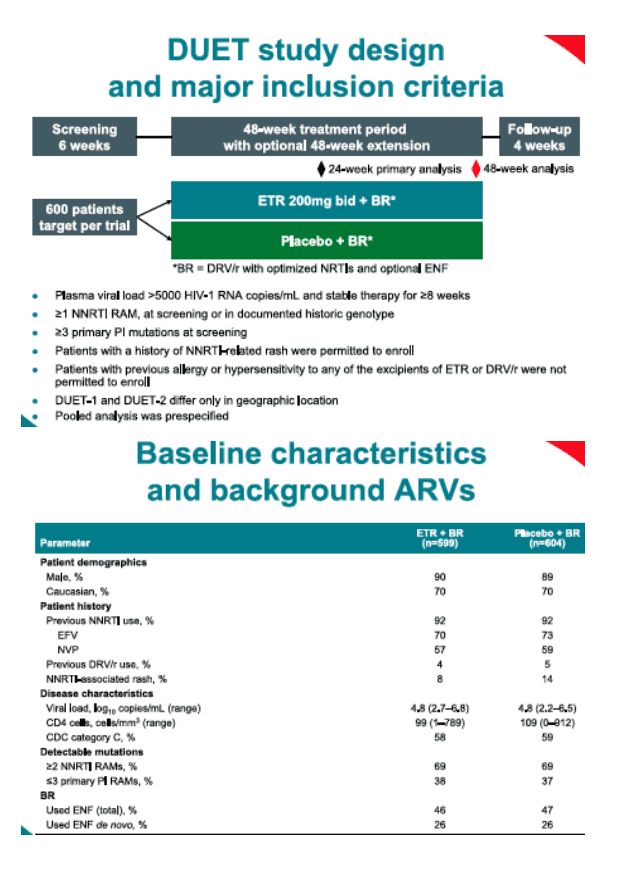
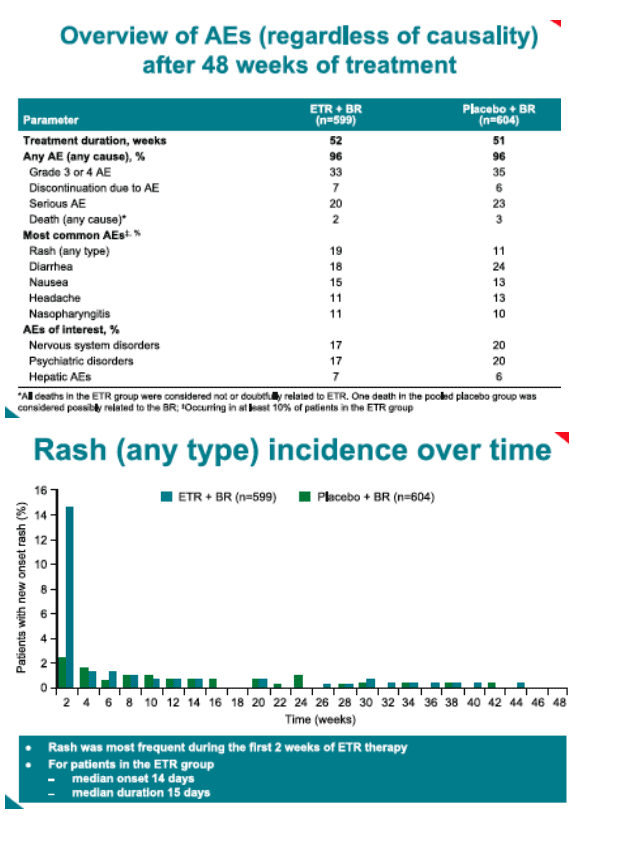
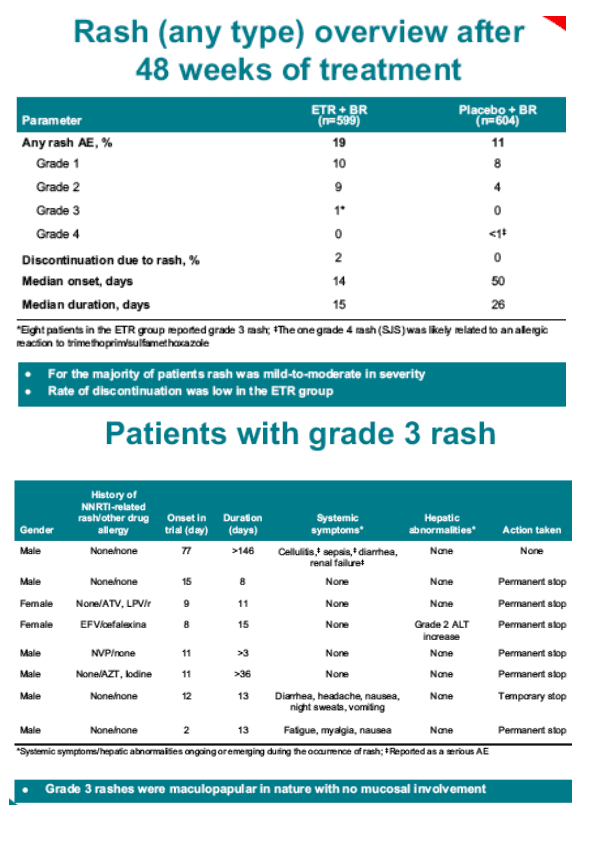
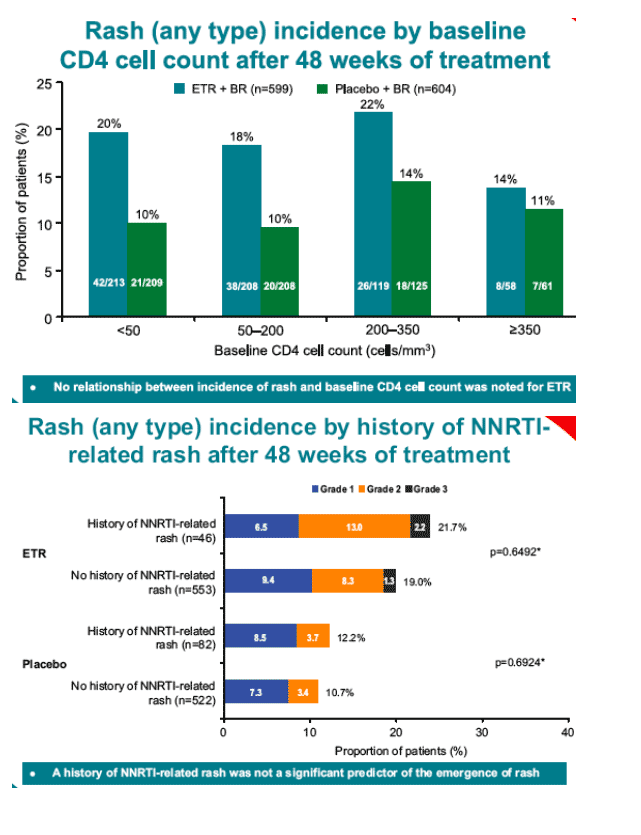
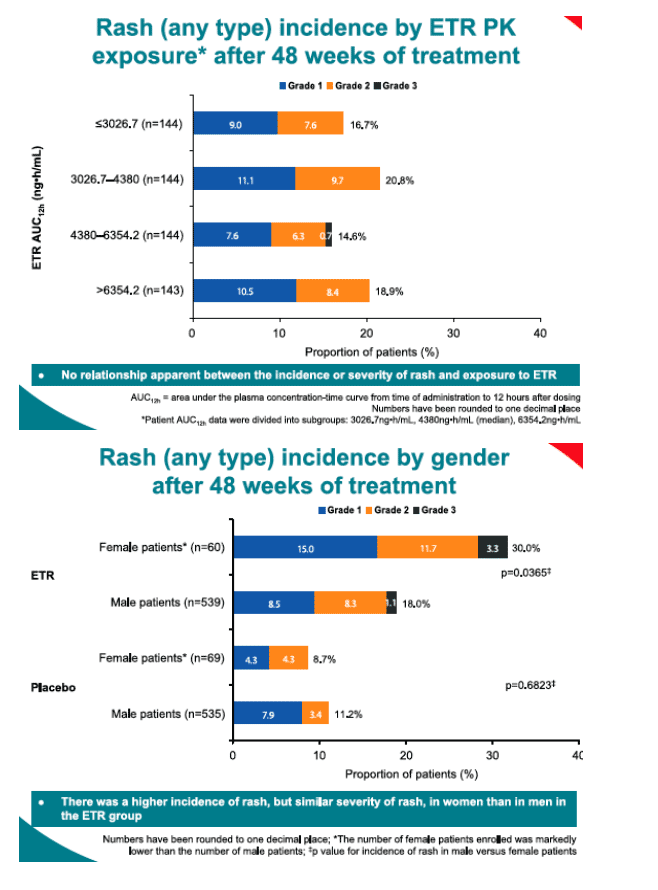
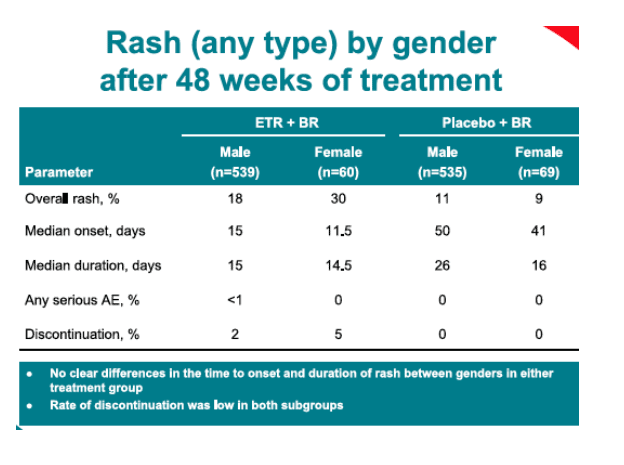
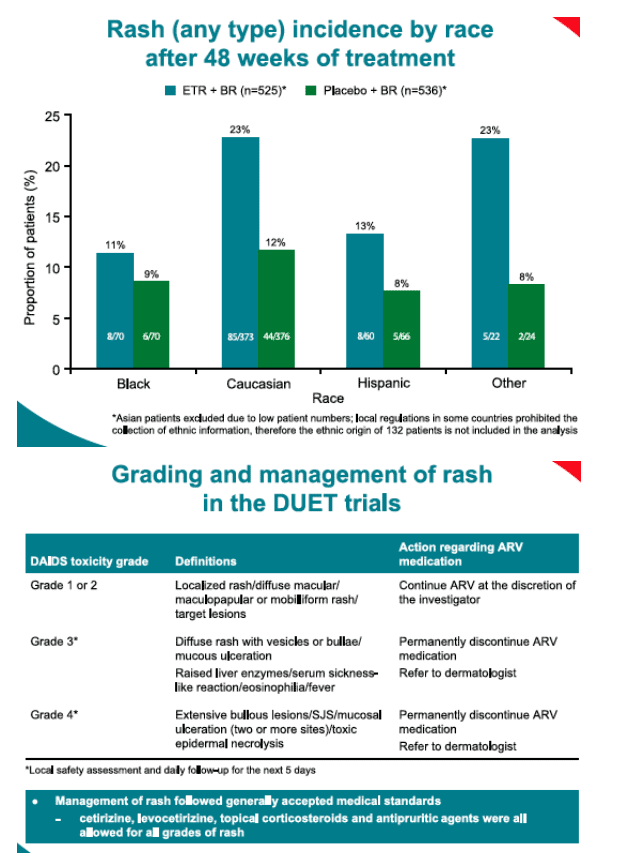
|
| |
|
 |
 |
|
|